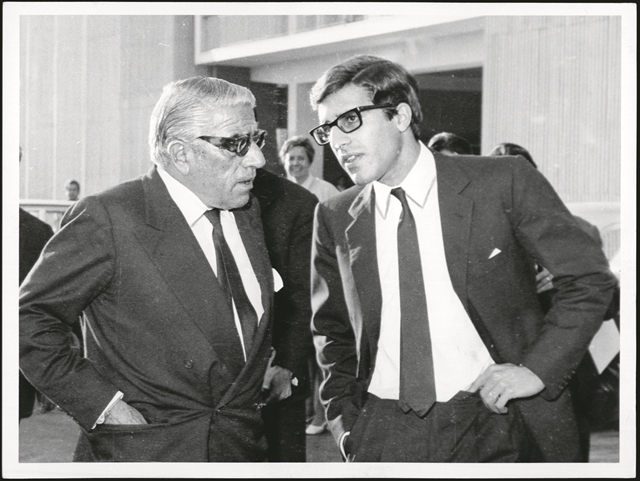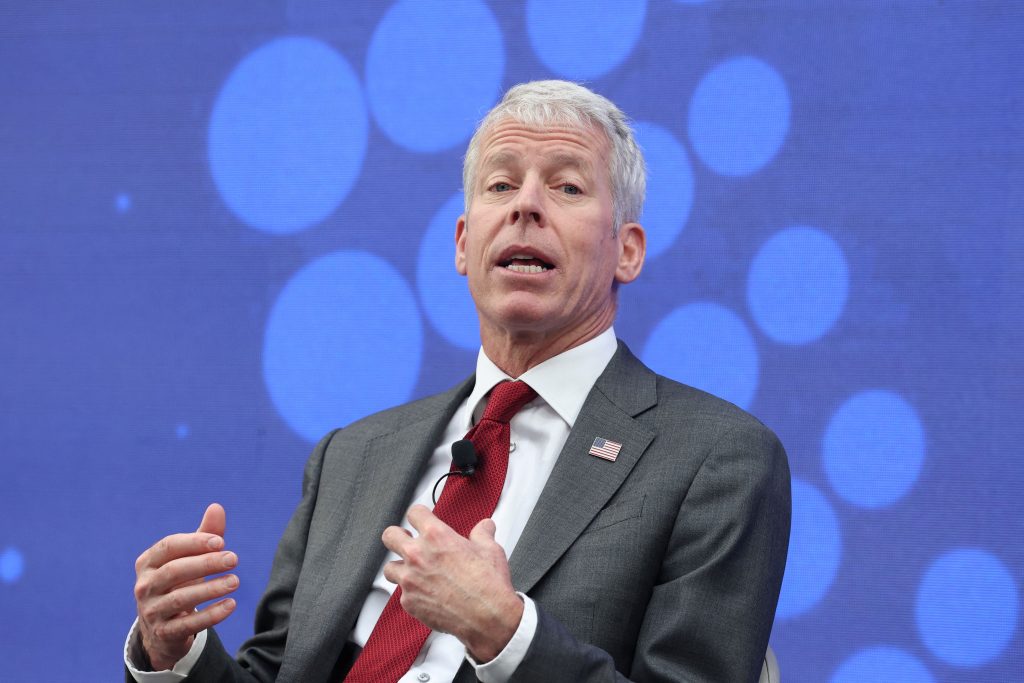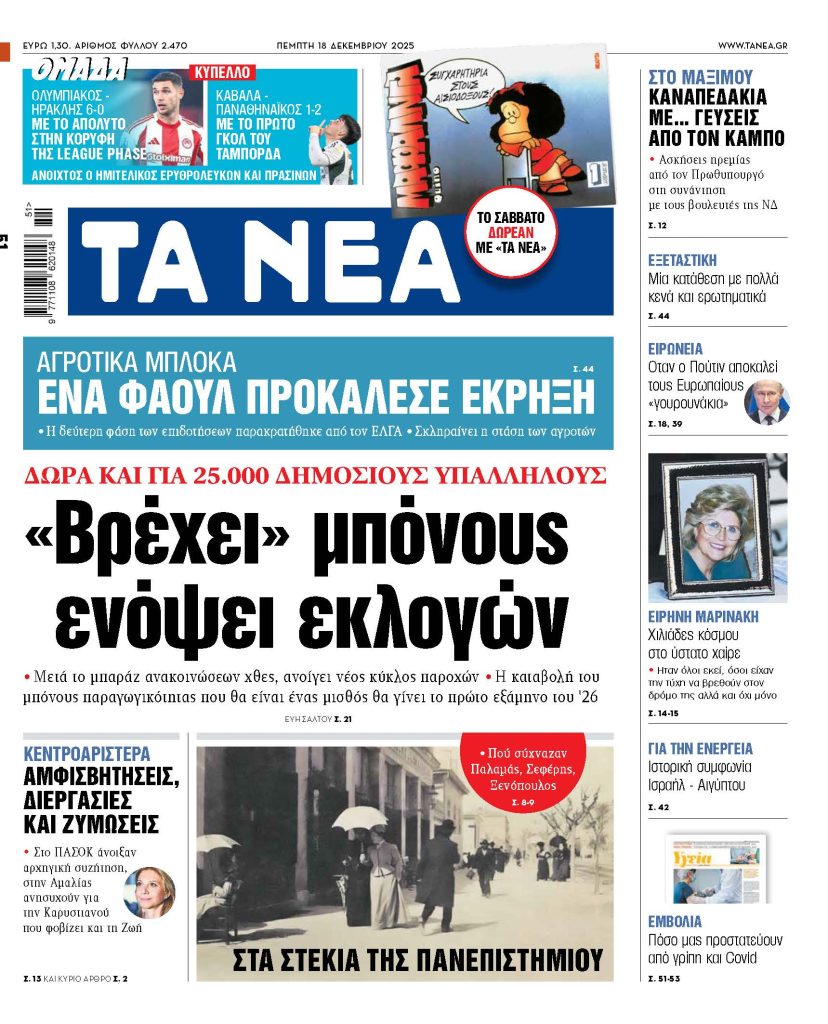The Onassis Cultural centre “illuminates” the capital with the gifts of culture, and the Onassis Foundation reminds one of the great contributions and prestige of the glorious past.
The construction of an organ transplant centre points to the future, and the planned purchase of the Errikos Dunant (Henri Dunant) hospital confirms the Foundation’s concern about the drama of Greece’s present, offering a helping hand even to the embattled left-wing government.
The Onassis Foundation has been very active of late. Its benefactions are many and initiatives come one after the other, especially in the sensitive health sector.
All the activities seem to be coordinated with one another in a complex plan of “offering” in the areas of Culture, Education, and Healthcare, and are supported by the fleet of ships bequeathed by ingenious Aristotle Onassis.
‘One-man rule’ at Onassis Foundation
The plans of Onassis Foundation President Antonis Papadimitriou – the only dominant force in the Foundation now – appear ambitious and are evolving with a dynamism and haste to which we were not accustomed.
Until now, the activities of the foundation appeared stationary, especially as compared to the Stavros Niarchos Foundation, the grants of which have overshadowed everyone and everything over the last years.
Those in charge of the Onassis Foundation felt an intense pressure, and obviously they undertook initiatives. They are managing a huge fortune created by others, and they were obliged to have a presence and activity.
In that environment, the Onassis Foundation recently submitted a bid to buy the Errikos Dunant (Henri Dunant) Hospital, and if it succeeds in acquiring the hospital, it has committed itself to donating it to the state.

Meanwhile, the Foundation is proceeding with the construction of a National Transplant Centre at the site of the Onassis Cardiac Surgery Centre, together with which it aims to establish a powerful pillar of healthcare, with a leading role in Greece’s health system.
The Onassis Foundation is managed by one-man rule, as Mr. Papadimitriou managed to be the only continuer of the administrative triumvirate of the Papadimitriou, Zambelas and Ioannidis families, which were chosen by Aristotle Onassis to manage his estate. In short, he cast out from the Foundation the two other families who were associates of Onassis and were chosen by him personally to co-manage the Foundation and its enormous wealth.
The first administrators and their descendants
In 2005, Mr. Papadimitriou became the President and Treasurer of the Foundation, Yannis Ioannidis took the office of Vice-President, and Yorgos Zambelas that of Secretary, succeeding their parents.
Stelios Papadimitriou was Onassis’ personal lawyer. Pavlos Ioannidis was a decorated WWII hero and director of Olympic Airlines, and Apostolos Zambelas was the financial director of Olympic.
Along the way, however, the three descendants and managers of Aristotle Onassis’ fabulous wealth disagreed over the decision-making process. Mr. Papadimitriou’s strong personality did not permit disputes or opposing opinions. Following negotiations, there came what some viewed as a “velvet” divorce, with the departure from the Foundation’s Presidium of economist Yannis Ioannidis and of architect Yorgos Zambelas.
Along with them, many other associates of Onassis left, either because they were pushed out or because of the behaviour of the new “chief” of the Foundation.
In shipping circles, one hears various accounts about the methods of ostracising a host of associates of Onassis, as well as about the extremely rude treatment of other once close associates of Onassis.
The case of Meropi Konialidi, a half-sister of Aristotle Onassis, and of members of her family, who were all ousted from the Foundation in violation of Onassis’ wishes, is indicative. The Foundation’s behaviour towards her in the last decade of her life was, to say the least, unacceptable.
Through various such means, lawyer Antonis Papadimitriou became all-powerful, the absolute and sole lord of a huge estate that was bequeathed in a unique manner.
According to one account, Papadimitriou’s family controls everything, with his wife, Aphroditi Panagiotakou, who is the Foundation’s Cultural Director, playing a leading role in management.
Many speak of a couple with an aggressive and extremely competitive approach to other Foundations. Their stance towards artists is similar, as they pay very large sums to secure exclusive contracts. Having secured complete domination, Papadimitriou’s long-term plans started unfolding.
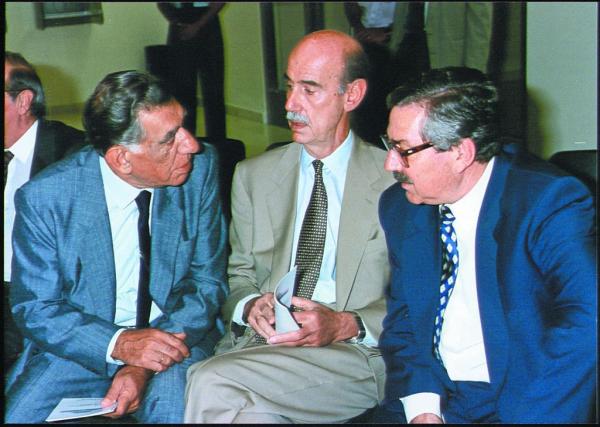
Bid for the Errikos Dunant Hospital
In the framework of the generally recognised restructuring of the Onassis Foundation, Papadimitriou, in cooperation with the government, and specifically Health Minister Andreas Xanthos and Alternate Health Minister Pavlos Polakis, submitted a bid to acquire the Errikos Dunant Hospital in a tender conducted by the current owner, Piraeus Bank.
A political agreement – with unknown possible quid pro quos – provides that if the Foundation is the highest bidder, it will donate the hospital to the state.
The Foundation’s bidding in the tender dissuaded other aspiring owners. Indicatively, in the non-binding offers phase, five investment groups submitted offers. In the binding offers stage, dossiers were submitted only by the Onassis Foundation and a Bulgarian investor who had worked with George Soros.
The Foundation’s initial offer was 45mn euros. An improved offer was requested and was submitted, but it was a far cry from the 100mn euro book value of the hospital. Moreover, the Foundation is looking to negotiate with the bank to obtain a generous haircut on the hospital’s loans, so as to restore balance to its operation.
Recently, the bank issued an announcement stating that the tender will be conducted with full transparency and will guarantee the interests of the bank. It thus responded indirectly to rumours about the government exerting pressures in order for the Foundation’s bid to be preferred. More recent information indicates that the Bulgarian investor remains active, and that Piraeus Bank has made clear to everyone that it will settle for no less than 115mn euro.
It should be noted that the Onassis Foundation had responded to a 2016 call from State Minister Alekos Flambouraris to participate in an Attica Bank increase of share capital in the amount of three million euro, resulting in losses due to the collapse of the share price.
The plan to construct a National Transplant Centre
The second and even more important contribution of the Foundation to the health sector is the construction of a National Transplant Centre, which will begin in January, 2019, contiguous to the Onassis Cardiac Surgery Centre. The building will be completed in four years.
“This constitutes an ideal example of public-private partnership,” Antonis Papadimitriou said at a recent event.
“The insured, the uninsured, and migrants will have access to the Centre,” he underlined, highlighting the social contribution of the project.
The total budget is 100mn euro, of which 30mn is earmarked for equipment.
The Centre will support transplants of the heart, lungs, liver, and the pancreas.
First step in health sector
The creation of the Onassis Cardiac Surgery Centre was a major project that constituted the dynamic entry of the Foundation into the health sector. Construction began in 1987 and was completed in1992.
The hospital cost over $75mn, which is estimated at 150mn euro in today’s value. On 6 October, 1992, following the conclusion of construction it was handed over fully equipped to the Greek state.
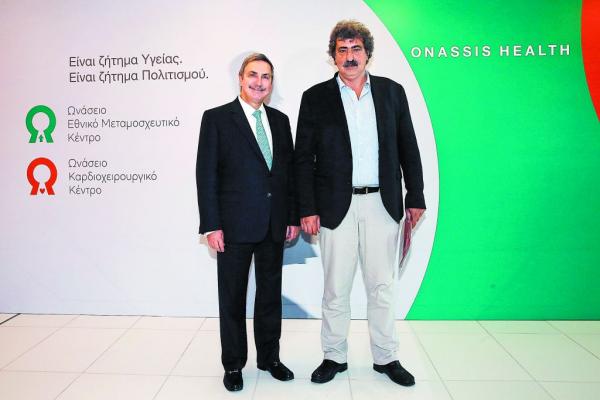
Since then, it has operated with the exclusive responsibility of the Greek state. Those in the know say that the Foundation casts a heavy shadow on its operation and choices. Not a few people believe that the invisible governor of the hospital is Mr. Papadimitrioiu, implying that everything is done under his auspices and his superior guidance, with all that this entails.
Bid for cultural hegemony
In the area of culture, the Onassis Cultural Centre was inaugurated in December, 2010, in Athens. The spaces allow visitors to enjoy the theatre, lectures, musical performances, dance and opera.
Its impact on the country’s cultural firmament is strong and growing, as the persistent efforts to dominate the scene confirm.
That was preceded by the creation of an affiliate, Onassis USA, based in New York, which was launched in autumn, 1999. Along with the education programme, there is a broad network of scholarships and collaborations with the universities and the technological institutes of the country.
Recently, after the establishment of Mr. Papadimitriou’s dominion, there have been efforts at a communications management of all activities of the Foundation, geared toward establishing a comprehensive presence, and a stronger role in Greek affairs.
Foundation’s priorities
The Aristotle S. Onassis Public Benefit Foundation was established in December, 1975, in accord with the wishes of Aristotle Onassis, in the name of his son, Alexandros Onassis. It was strictly stipulated by Aristotle Onassis that the headquarters of the Foundation must be in Vaduz, Lichtenstein.
Culture, Education, Environment, Healthcare, and social solidarity are all basic priorities of the Foundation. All of its activities are related to Greece and Greek culture. In the field of social solidarity, projects that offer a public benefit are promoted based on the rules of the Foundation and the will of Aristotle Onassis, which excludes charity to individuals.
In a recent accounting, the Foundation had 6,500 scholarship holders, of which over 1,000 were artists. The Onassis Cardiac Surgery Centre had treated 600,000 patients. Over 5,000 grants had been made to cultural organisations, museums, university chairs, and Greek studies departments all over the world, from Buenos Aires to Haifa, and from Tirana to Boston.
Approximately 1,300 state schools and special education centres all over Greeks were bolstered in terms of both logistics and through educational programmes for educators themselves.
The Onassis Cultural Centre has left its imprint on the cultural map of Greece, through both its artistic and educational activities.
The Foundation is governed by a 15-member Board of Directors, as stipulated by Aristotle Onassis in his will.
The Board takes decisions with a simple majority, except when the charter provides otherwise. It meets regularly at the Foundation’s headquarters in Valduz, Liechtenstein.
The original members of the Board of Directors, whom Aristotle Onassis designated in his will in 1975 as life members, were for the most part trusted associates and entrepreneurial collaborators. Of those, two remain, Pavlos Ioannidis and Paraskevas Ioannidis.
All of the Board members not designated by Onassis in his will – 13 out of 15 – are elected for a set period by the Board itself in accordance with specific criteria that have been instituted.
Shipping money, ‘shadows’, the veil of mystery
Healthcare, Education, and Culture, that entire spiritual wealth, is funded by the income from shipping. Specifically, all of the Foundation’s projects are funded exclusively with the profits of a self-contained and institutionally independent Foundation which is entrepreneurial in character and named Alexander S. Onassis Foundation, based in Vaduz, Liechtenstein.
The business foundation is active mainly in the sectors of shipping, real estate investments, and financial products. According to the will of Aristotle Onassis, 40% of the business profits of the Foundation are earmarked for public benefit activities.
According to the urban legend, the initial capital of the Foundation which Aristotle Onassis had put down in 1975 amounted to $240mn.
Today, the Foundation maintains that the capital has increased fivefold, without taking into account the very substantial amount that has been spent on public benefit works over all these years.
In the shipping sector, the Foundation remains active through Olympic Shipping and Management S.A., which is the successor to Olympic Maritime, which was founded in 1952 in Paris by Aristotle Onassis, and which was based in Monaco until the early 1990s.
Since then, the company was moved to Paleo Faliro in the greater Athens area. It manages a fleet that consists of 21 double hull tankers and 10 bulk carriers, with a total transport capacity of 6,196, 712 DWT. Of those, 14 are Greek-flagged, 15 Marshall Islands-flagged, and two Panamanian-flagged. Olympic Shipping and Management S.A. provides services for the commercial exploitation of ships (charter) as well as for logistically monitoring them.
All of the ships under the Business Foundation’s control employ a total of 600 sailors, 200 of whom are Greek.

Investment portfolio
The Business Foundation manages real estate in the US, London, Bucharest, and Athens. The only real estate bequeathed by Onassis was a property in London and the property on which the Cardiac Surgery Centre was built. Substantial amounts are invested in stocks, bonds, time deposits, and other portfolio investments.
Veil of mystery covers assets’ value
The true value of the assets of the Foundation is covered by a veil of mystery. The Foundation does not release balance sheets, and its activities are directed by dozens of affiliated businesses abroad.
At times, the management of the Foundation has been criticised over this practice, given the fact that a Public Benefit Foundation should seek transparency in its actions.
The weightiest charge, which has been lodged against both the previous and current administrators, is that it is the only foundation that does not have a family member of the founder on its Board.
After the death of Christina Onassis, heir Athina Onassis never became President of the Foundation, with the extraordinary explanation that she does not speak Greek.
